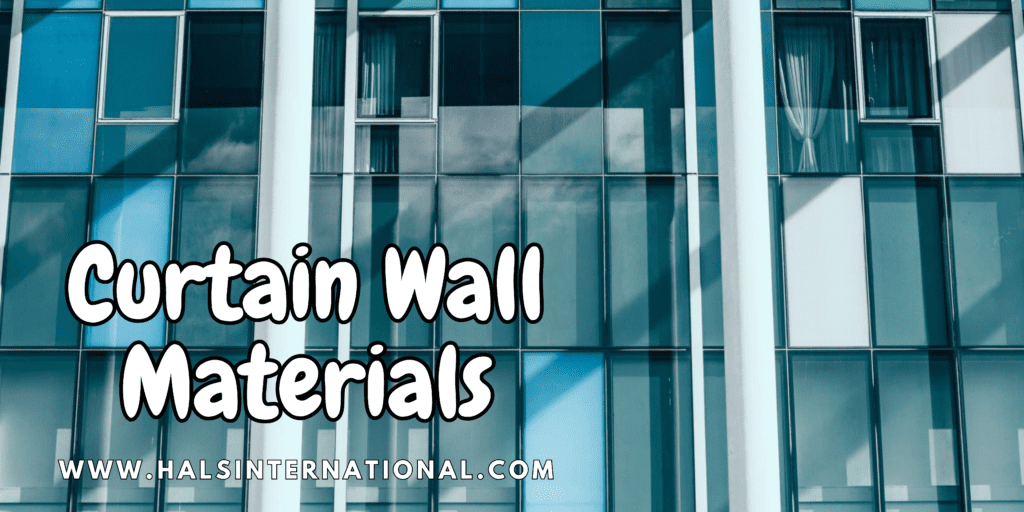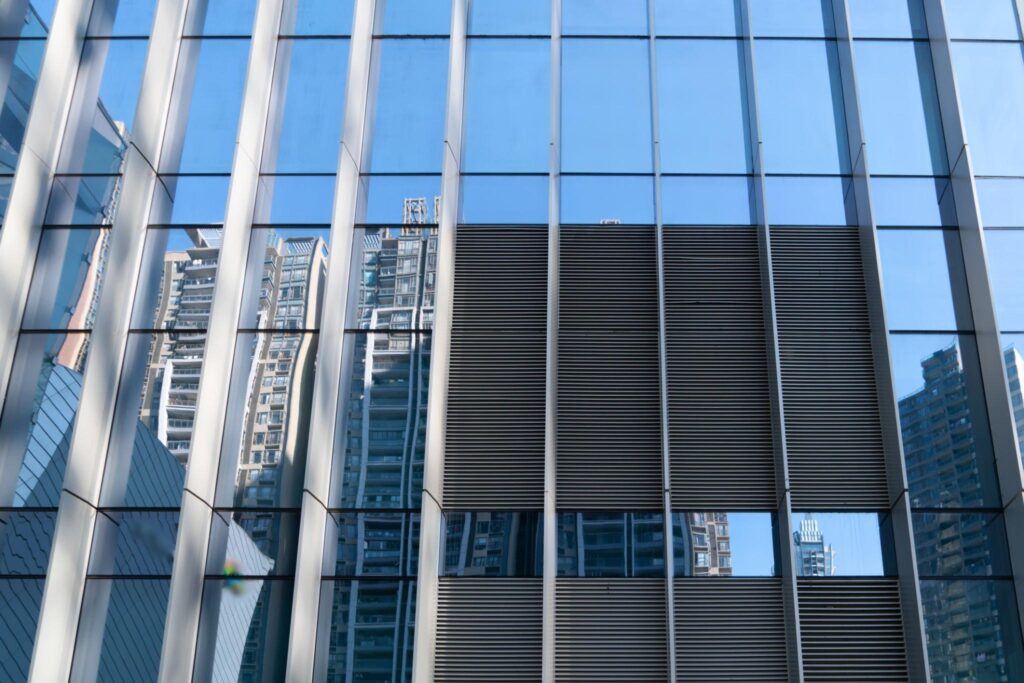
The use of curtain walls in modern architecture has revolutionized the construction industry, offering numerous benefits in terms of aesthetics, functionality, and sustainability. A curtain wall is an exterior building envelope system that provides an additional layer of protection, insulation, and visual appeal to a structure. The selection of appropriate curtain wall materials is crucial to achieving the desired architectural vision while meeting various performance requirements.
In this article, we will explore the different types of curtain wall materials available, their importance, factors to consider when choosing them, as well as advancements and sustainability aspects.
Check Our high quality products here:
The article will introduce the concept of curtain walls, briefly explaining their purpose and significance in contemporary architecture. It will set the stage for discussing the importance of selecting the right curtain wall materials to achieve specific design goals and meet performance standards.
What Is A Curtain Wall?
This section will provide a comprehensive definition of a curtain wall, describing its function and characteristics. It will explain how curtain walls differ from traditional load-bearing walls and highlight their role in creating visually striking facades.
Importance Of Curtain Wall Materials
- Enhancing Aesthetics: The aesthetics of a building play a significant role in attracting attention and conveying the desired architectural style. This subsection will discuss how curtain wall materials contribute to the overall visual appeal of a structure, allowing architects to incorporate various design elements such as transparency, color, texture, and patterns.
- Ensuring Structural Integrity: A curtain wall not only enhances a building’s appearance but also provides structural support. This section will explore how curtain wall materials, when combined with appropriate framing systems, can effectively distribute loads, withstand environmental forces, and maintain the structural integrity of the building.
- Improving Energy Efficiency: Energy efficiency is a critical aspect of modern building design. This subsection will explain how curtain wall materials, such as glass with low-emissivity coatings and thermal breaks, contribute to reducing heat transfer, minimizing energy consumption, and optimizing indoor comfort.
- Providing Thermal Insulation: Thermal insulation is essential for maintaining a comfortable indoor environment and reducing heating and cooling costs. This section will discuss how curtain wall materials can be designed to provide effective thermal insulation, preventing heat loss or gain and improving overall energy performance.
Contact Us For Unique Products And Services
Common Curtain Wall Materials
This section will delve into the various curtain wall materials commonly used in construction projects. It will explore their properties, advantages, and limitations. The materials covered will include:
- Glass: Glass is a popular choice for curtain walls due to its versatility and aesthetic appeal. This subsection will discuss different types of glass, such as float glass, tempered glass, laminated glass, and insulated glass units (IGUs), highlighting their unique characteristics and applications.
- Aluminum: Aluminum is widely utilized in curtain wall systems for its lightweight nature, corrosion resistance, and ease of fabrication. This subsection will elaborate on the benefits of using aluminum, including its strength, durability, and design flexibility.
- Steel: Steel curtain wall systems offer exceptional strength and durability. This section will explore the advantages of steel, particularly in high-rise buildings or structures that require enhanced resistance to wind loads and seismic forces.
- Stone: Stone curtain walls provide a timeless and luxurious appearance. This subsection will discuss various types of stone materials, such as granite, marble, limestone, and travertine, emphasizing their durability, aesthetic appeal, and unique installation considerations.
- Composite Materials: Composite materials, such as fiber-reinforced polymers (FRPs), offer a combination of strength, flexibility, and design options. This section will explore the benefits of using composites in curtain walls, including their lightweight nature, corrosion resistance, and architectural versatility.
Factors To Consider
When selecting curtain wall materials, several factors must be considered. This section will guide architects and project teams in making informed decisions based on the following aspects:
- Building Location and Climate: Different climates and geographical locations pose distinct challenges to curtain wall performance. This subsection will discuss how factors like wind loads, temperature variations, humidity, and exposure to sunlight influence the choice of materials.
- Design Requirements: The desired architectural style, visual aesthetics, and functional requirements of the building play a crucial role in material selection. This section will explore how curtain wall materials can be chosen to align with the overall design vision while meeting specific project requirements.
- Maintenance and Durability: The longevity and ease of maintenance of curtain wall materials are essential considerations. This subsection will discuss the durability of different materials and their resistance to factors such as corrosion, weathering, impact, and cleaning requirements.
- Cost Considerations: Budget constraints often play a significant role in material selection. This section will highlight the cost implications of different curtain wall materials, including initial costs, maintenance expenses, and potential long-term savings.

Advancements In Curtain Wall Materials
As technology progresses, new materials and innovative solutions continue to emerge in the field of curtain wall design. This section will explore several advancements in curtain wall materials, including:
- Insulated Glass Units (IGUs): IGUs incorporate multiple glass panes with an insulating spacer in between, offering enhanced thermal performance and acoustic insulation. This subsection will discuss the benefits of IGUs and their applications in energy-efficient buildings.
- Photovoltaic (PV) Panels: PV panels integrated into curtain wall systems can generate renewable energy while maintaining the transparent nature of the facade. This section will explore the potential of PV curtain walls in contributing to a building’s energy needs.
- Polycarbonate: Polycarbonate curtain walls provide a lightweight and shatter-resistant alternative to glass. This subsection will discuss the advantages of polycarbonate, including its high impact resistance, excellent light transmission, and design versatility.
- Ceramic: Ceramic curtain wall materials offer unique aesthetics, durability, and fire resistance. This section will delve into the characteristics of ceramic panels and their applications in both exterior and interior architectural designs.
- ETFE Foil: Ethylene tetrafluoroethylene (ETFE) foil is a lightweight and highly transparent material used in the construction of modern curtain walls. This subsection will explore the advantages of ETFE, such as its durability, self-cleaning properties, and light transmission capabilities.
Sustainability and Green Building Practices
Sustainability is an increasingly vital aspect of modern construction. This section will highlight the sustainability benefits associated with curtain wall materials, including:
- Recyclable Materials: The use of recyclable curtain wall materials contributes to reducing the environmental impact of construction projects. This subsection will discuss how materials like glass, aluminum, and composites can be recycled and repurposed.
- Energy-Efficient Design: Curtain wall systems play a significant role in the energy performance of buildings. This section will explore how the selection of energy-efficient materials, coupled with appropriate design strategies, can minimize energy consumption and improve thermal comfort.
- Daylighting and Natural Ventilation: Curtain walls can facilitate ample daylight penetration and natural ventilation, reducing the reliance on artificial lighting and mechanical ventilation systems. This subsection will discuss the benefits of incorporating daylighting and natural ventilation strategies into curtain wall designs.
Conclusion
In conclusion, the selection of appropriate curtain wall materials is crucial for achieving both aesthetic and functional objectives in modern architecture. By carefully considering factors such as aesthetics, structural integrity, energy efficiency, and sustainability, architects and project teams can create visually stunning and environmentally conscious buildings. For more informational article like these you can visit our website.
Frequently Asked Questions
Yes, curtain wall materials can be customized to meet the unique design requirements and architectural vision of a project. Manufacturers offer a wide range of options, including various finishes, colors, textures, and patterns.
Curtain wall materials can be selected based on the climate and location of the building. Materials with appropriate thermal insulation properties and resistance to environmental factors like wind and moisture can be chosen to ensure performance and durability.
The lifespan of curtain wall materials depends on factors such as material quality, maintenance practices, and exposure to environmental conditions. High-quality materials, proper installation, and regular maintenance can ensure the longevity of curtain wall systems, typically ranging from 30 to 50 years or more.
Yes, energy-efficient curtain wall materials, such as low-emissivity glass and thermally broken frames, can significantly reduce heat transfer and minimize energy consumption. By optimizing insulation and harnessing natural light, curtain walls can contribute to energy savings in buildings.
Many curtain wall materials, such as glass and aluminum, are recyclable. Choosing recyclable materials and incorporating energy-efficient design strategies can enhance the sustainability of curtain wall systems, aligning with green building practices.
